An Evaluation of Precipitation in Dongting Lake Basin on CMIP5 Models
Abstract
1. Introduction
2. Data and Methods
3. Results
3.1. Applicability Analysis of the Models in Dongting Lake Basin
3.2. Projection of Precipitation in Flood Season in Dongting Lake Basin in the next 30 Years
3.3. Analysis of Circulation Characteristics
4. Summary and Discussion
- Most of the models showed good performance ability for flood precipitation in Dongting Lake Basin during 2006–2019, but the spatial correlation was relatively low. The models that performed well by evaluation were inmcm4, MPI-ESM-LR, MPI-ESM-MR, and NorESM1-M, and the models that performed poorly were ACCESS1-0, GISS-E2-H, and MIROC5.
- Seen from the analysis of the precipitation prediction trend from 2020 to 2049, most models showed an increasing trend in future precipitation prediction in the Dongting Lake Basin, while the MME showed a slow growth trend, with an average growth rate of 0.8 mm/year. Looking from the monthly prediction trend, the precipitation showed an increasing trend in April, and a weakening trend in May; the precipitation prediction presented a rising trend on the whole in June and July, but a declining trend in a small range of areas; the August and September trend distributions were relatively similar; the northeastern precipitation showed a weakening trend, while other areas showed an increasing trend.
- There were obvious interannual and interdecadal variations in the future flood precipitation in the Dongting Lake Basin, showing a “peak–valley–peak–valley” pattern of change. The analysis of the circulation field in the peak and valley years showed that the interannual variation of precipitation was closely related to the large-scale circulation field, and the features of low-level convergence and high-level divergence had an obviously stronger effect compared with the inactive years; moreover, the teleconnection pattern of “+ − +” formed from Europe, the Ural Mountains, and East Asian region clearly manifested in the height field of 500 hPa in the Dongting Lake Basin, which can affect the trough ridge strength over East Asia, and change the convergence and divergence of the water vapor in the lower atmosphere, thus influencing the water vapor source of the Dongting Lake Basin.
- In the context of global warming, the water resources situation of Dongting Lake has changed significantly, especially after the Yangtze River entered the post Three Gorges era, the traditional river–lake relationship and the climate ecosystem of the Dongting Lake region have undergone radical changes. Factors such as water storage in the Three Gorges, water coming from Yangtze River, and precipitation in four water basins will have important impacts on the Dongting Lake Basin. Flood precipitation is only one part of this, but it has a significant impact on the natural environment and human activities. This study evaluated the performance of climate models in capturing historical precipitation and the range of uncertainty in future projections to provide more information on the expected precipitation changes, which can be useful for water resource management in the Dongting Lake Basin and can also provide a reference for subsequent studies assessing or predicting precipitation in the Dongting Lake Basin. One shortcoming of this article is that only statistical methods were used to predict precipitation in the Dongting Lake Basin during the flood season, and more methods can be used in future studies to reduce the uncertainty of future predictions. It is worth noting that the use of methods such as downscaling of the data in model assessment or prognosis of basin scale will make the results more convincing, which is also planned in future research. Another shortcoming is that the latest CMIP6 model information was not used because there have been few studies on the model assessment or prognosis of the Dongting Lake Basin. The CMIP5 model information used in this paper to conduct the study can be used as a basis for future studies.
Author Contributions
Funding
Institutional Review Board Statement
Informed Consent Statement
Data Availability Statement
Conflicts of Interest
References
- Wentz, F.J.; Ricciardulli, L.; Hilburn, K.; Mears, C. How much more rain will global warming bring? Science 2007, 317, 233–235. [Google Scholar] [CrossRef] [PubMed]
- He, C.; Liu, Z.; Hu, A. The transient response of atmospheric and oceanic heat transports to anthropogenic warming. Nat. Clim. Chang. 2019, 9, 222–226. [Google Scholar] [CrossRef]
- Sun, X.Y.; Wang, Y.D. Attribution Analysis of Annual Precipitation Simulation Differences and Its Correction of CMIP5 Climate Models on the Chinese Mainland. Atmosphere 2022, 13, 382. [Google Scholar] [CrossRef]
- Chen, H.P. Projected change in extreme rainfall events in China by the end of the 21st century using CMIP5 models. Chin. Sci. Bull. 2013, 58, 1462–1472. [Google Scholar] [CrossRef]
- Gao, X.J.; Shi, Y.; Zhang, D.F.; Filippo, G. Climate change in China in the 21st century as simulated by a high resolution regional climate model. Chin. Sci. Bull. 2012, 57, 1188–1195. [Google Scholar] [CrossRef]
- Ren, Y.J.; Zhou, B.T.; Song, L.C.; Xiao, Y. Interannual variability of western North Pacific subtropical high, East Asian jet and East Asian summer precipitation: CMIP5 simulation and projection. Quat. Int. 2017, 440, 64–70. [Google Scholar] [CrossRef]
- Sun, Y.; Ding, Y.H. A projection of future changes in summer precipitation and monsoon in East Asia. Sci. China Ser. D Earth Sci. 2010, 53, 284–300. [Google Scholar] [CrossRef]
- Xu, Y.; Xu, C.H. Preliminary assessment of simulations of climate changes over China by CMIP5 multi-models. Atmos. Ocean. Sci. Lett. 2012, 5, 489–494. [Google Scholar] [CrossRef]
- Jiang, D.; Tian, Z.; Lang, X. Reliability of climate models for China through the IPCC Third to Fifth Assessment Reports. Int. J. Climatol. 2016, 36, 1114–1133. [Google Scholar] [CrossRef]
- Wu, J.; Zhou, B.T.; Xu, Y. Response of precipitation and its extremes over China to warming: CMIP5 simulation and projection. Chin. J. Geophys. 2015, 58, 3048–3060. (In Chinese) [Google Scholar] [CrossRef]
- Yao, S.B.; Jiang, D.P.; Fan, G.Z. Projection of precipitation seasonality over China. Chin. J. Atmos. Sci. 2018, 42, 1378–1392. (In Chinese) [Google Scholar] [CrossRef]
- Zhou, L.; Lan, M.C.; Cai, R.H.; Huang, J.; Jiang, Z.H. The simulation of extreme precipitation over Hunan province based on the statistical dow nscaling method of transform cumulative distribution function (CDF-t). Plateau Meteorol. 2019, 38, 734–743. (In Chinese) [Google Scholar] [CrossRef]
- Jiang, Y.H.; Zeng, X.H.; Duan, L.J.; Tang, J.H.; Wu, J. Variation Characteristics of Precipitation Structure during Flood Season in Hunan Province. J. Arid. Meteorol. 2021, 39, 554. [Google Scholar]
- Yang, Y.; Dai, X.G.; Tong, H.W.; Zhang, B. CMIP5 Model Precipitation Bias-correction Methods and Projected China Precipitation for the Next 30 Years. Clim. Environ. Res. 2019, 24, 769–784. (In Chinese) [Google Scholar] [CrossRef]
- Chen, X.; Ren, L.L.; Yang, X.L.; Liu, L.J.; Tong, R.; Zhou, M. A CMIP5 Multi-model Estimation of Spatio-temporal Characteristics of Temperature, Precipitation in 7 Regions of China. J. China Hydrol. 2016, 36, 37–43. (In Chinese) [Google Scholar]
- Guo, R.; Zhu, Y.; Liu, Y. A comparison Study of precipitation in the poyang and the Dongting Lake Basins from 1960–2015. Sci. Rep. 2020, 10, 3381. [Google Scholar] [CrossRef]
- Wang, G.; Jiang, T.; Wang, Y.; Zhao, Y.U. Characteristics of climate change in the lake dongting basin (1961–2003). J. Lake Sci. 2006, 18, 470–475. [Google Scholar]
- Nusrat, A.; Gabriel, H.F.; e Habiba, U.; Rehman, H.U.; Haider, S.; Ahmad, S.; Shahid, M.; Ahmed Jamal, S.; Ali, J. Plausible Precipitation Trends over the Large River Basins of Pakistan in Twenty First Century. Atmosphere 2022, 13, 190. [Google Scholar] [CrossRef]
- Miró, J.J.; Estrela, M.J.; Olcina-Cantos, J.; Martin-Vide, J. Future Projection of Precipitation Changes in the Júcar and Segura River Basins (Iberian Peninsula) by CMIP5 GCMs Local Downscaling. Atmosphere 2021, 12, 879. [Google Scholar] [CrossRef]
- He, C.; Liu, Z.; Otto-Bliesner, B.L.; Brady, E.C.; Zhu, C.; Tomas, R.; Gu, S.; Han, J.; Jin, Y. Deglacial variability of South China hydroclimate heavily contributed by autumn rainfall. Nat. Commun. 2021, 12, 5875. [Google Scholar] [CrossRef]
- He, C.; Liu, Z.; Otto-Bliesner, B.L.; Brady, E.C.; Zhu, C.; Tomas, R.; Clark, P.U.; Zhu, J.; Jahn, A.; Gu, S. Hydroclimate footprint of pan-Asian monsoon water isotope during the last deglaciation. Sci. Adv. 2021, 7, eabe2611. [Google Scholar] [CrossRef] [PubMed]
- Wen, Q.; Liu, Z.; Zhu, J.; Yan, M.; He, C.; Han, J.; Liu, J.; Liang, Y. Local Insolation Drives Afro-Asian Monsoon at Orbital-Scale in Holocene. Geophys. Res. Lett. 2022, 49, e2021GL097661. [Google Scholar] [CrossRef]
- Ou, C.; Li, J.; Zhou, Y.; Cheng, W.; Yang, Y.; Zhao, Z. Evolution characters of water exchange abilities between Dongting Lake and Yangtze River. J. Geogr. Sci. 2014, 24, 731–745. [Google Scholar] [CrossRef]
- Yang, S.Y.; Yang, D.W.; Zhao, B.X.; Ma, T.; Lu, W.W.; Jerasorn, S. Future Changes in High and Low Flows under the Impacts of Climate and Land Use Changes in the Jiulong River Basin of Southeast China. Atmosphere 2002, 13, 150. [Google Scholar] [CrossRef]
- Sun, J.Q.; Ao, J. Changes in precipitation and extreme precipitation in a warming environment in China. Chin. Sci. Bull. 2013, 58, 1395–1401. [Google Scholar] [CrossRef]
- Zhou, B.T.; Wen, Q.H.; Xu, Y.; Song, L.; Zhang, X. Projected changes in temperature and precipitation extremes in China by the CMIP5 multimodel ensembles. J. Clim. 2014, 27, 6591–6611. [Google Scholar] [CrossRef]
- Wang, Y.J.; Zhou, B.T.; Qin, D.H.; Wu, J.; Gao, R.; Song, L. Changes in mean and extreme temperature and precipitation over the arid region of northwestern China: Observation and projection. Adv. Atmos. Sci. 2017, 34, 289–305. [Google Scholar] [CrossRef]
- Xu, Y.; Xu, C.; Gao, X.; Luo, Y. Projected changes in temperature and precipitation extremes over the Yangtze River basin of China in the 21st century. Quat. Int. 2009, 208, 44–52. [Google Scholar] [CrossRef]
- Zhao, L.; Liu, J.; Jin, C.H. Evaluation and projection of climate change in Jiangsu Province based on the CMIP5 multi-model ensemble mean datasets. J. Meteorol. Sci. 2019, 39, 739–746. (In Chinese) [Google Scholar]
- Zhang, J.Y.; Li, Y.; Zhang, D.H.; Chen, Z.H.; Yang, Y. Projected Changes in Extreme Precipitation Events in Guizhou Based on CMIP5 Simulations over the 21st Century. Chin. J. Agrometeorol. 2017, 38, 655–662. (In Chinese) [Google Scholar] [CrossRef]
- Yu, X.J.; Li, S.J.; Zhao, Y.; Yao, J.Q.; Li, H.J. Projected Summer Precipitation over Xinjiang by Multi-CMIP5 Models in the Next 30 Years. Desert Oasis Meteorol. 2017, 11, 53–62. (In Chinese) [Google Scholar] [CrossRef]
- Yu, H.; Zhou, Y.J.; Li, Q.; Jiang, Q.; Qiu, W.T.; Wu, D.; Cui, X.F. Study on Precipitation and Extreme Precipitation in the Wet Season in Sichuan Basin based on CMIP5 Models. Plateau Meteorol. 2020, 39, 68–79. (In Chinese) [Google Scholar] [CrossRef]
- Zhou, L.; Lan, M.C.; Cai, R.H.; Wen, P.; Yao, R.; Yang, Y.Y. Projection and uncertainties of extreme precipitation over the Yangtze River valley in the early 21st Century. Acta Meteorol. Sin. 2018, 76, 47–61. (In Chinese) [Google Scholar] [CrossRef]
- Zhou, H.; Khadgi, V.R.; Mao, D.; Xiao, H. Study on projection of water resources of Dongting Lake catchment based on emission scenarios assumptions. Hydrol. Sci. J. 2016, 61, 1791–1800. [Google Scholar] [CrossRef]
- Moss, R.H.; Edmonds, J.A.; Hibbard, K.A.; Manning, M.R.; Rose, S.K.; Vuuren, D.V. The next generation of scenarios for climate change research and assessment. Nature 2010, 463, 747–756. [Google Scholar] [CrossRef]
- Taylor, K.E.; Stouffer, R.J.; Meehl, G.A. An Overview of CMIP5 and the Experiment Design. Bull. Am. Meteorol. Soc. 2012, 93, 485–498. [Google Scholar] [CrossRef]

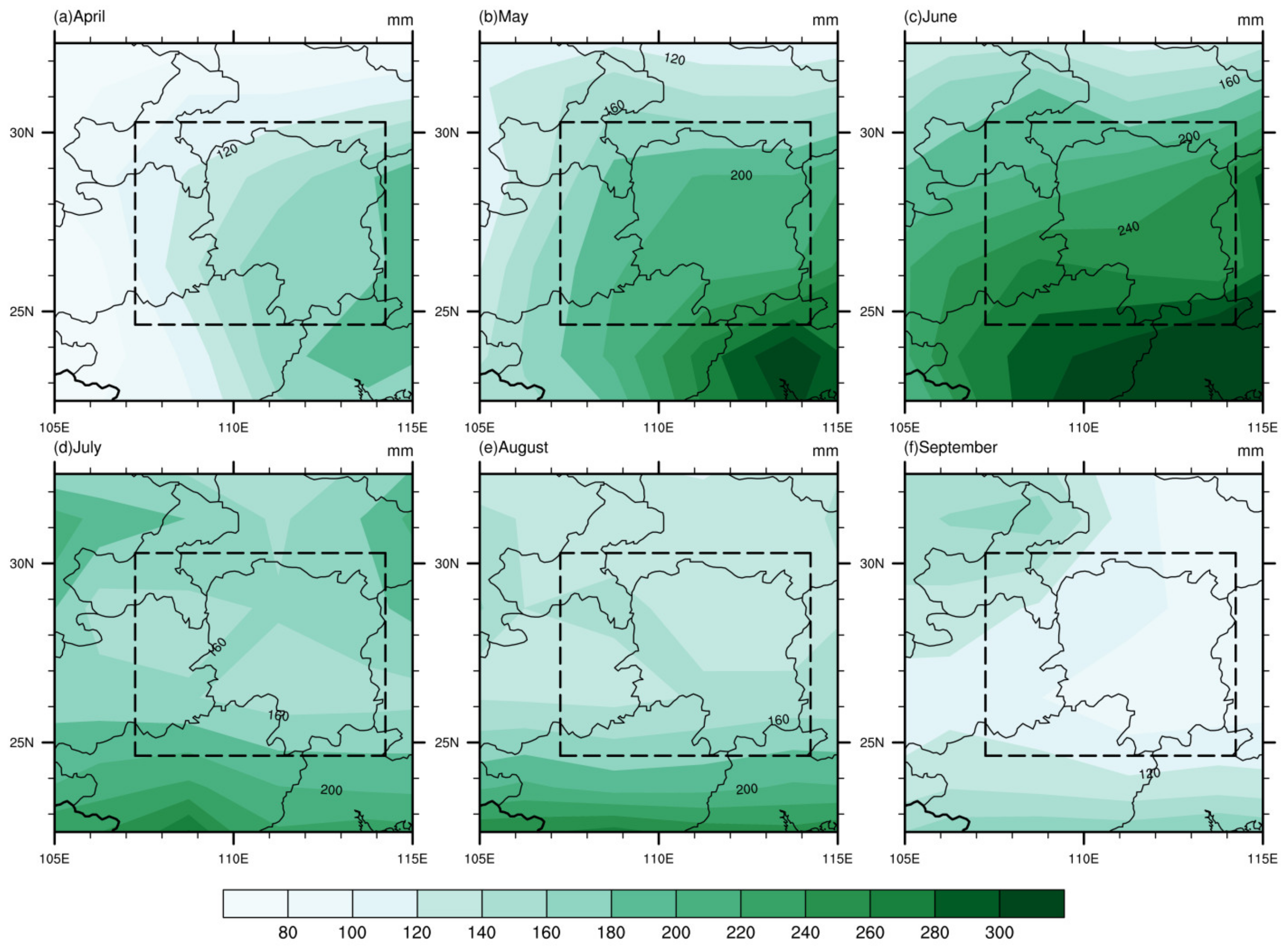


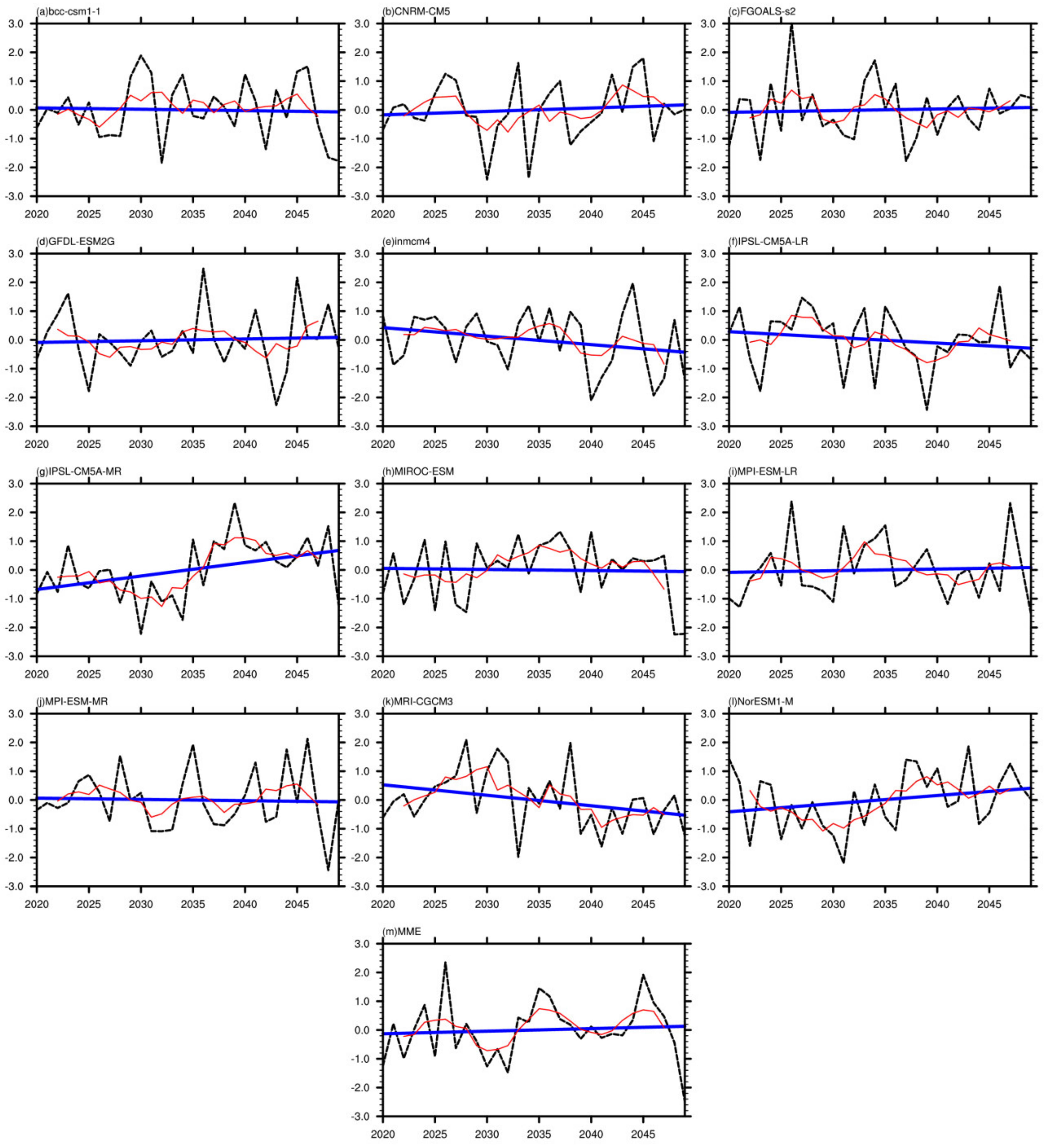
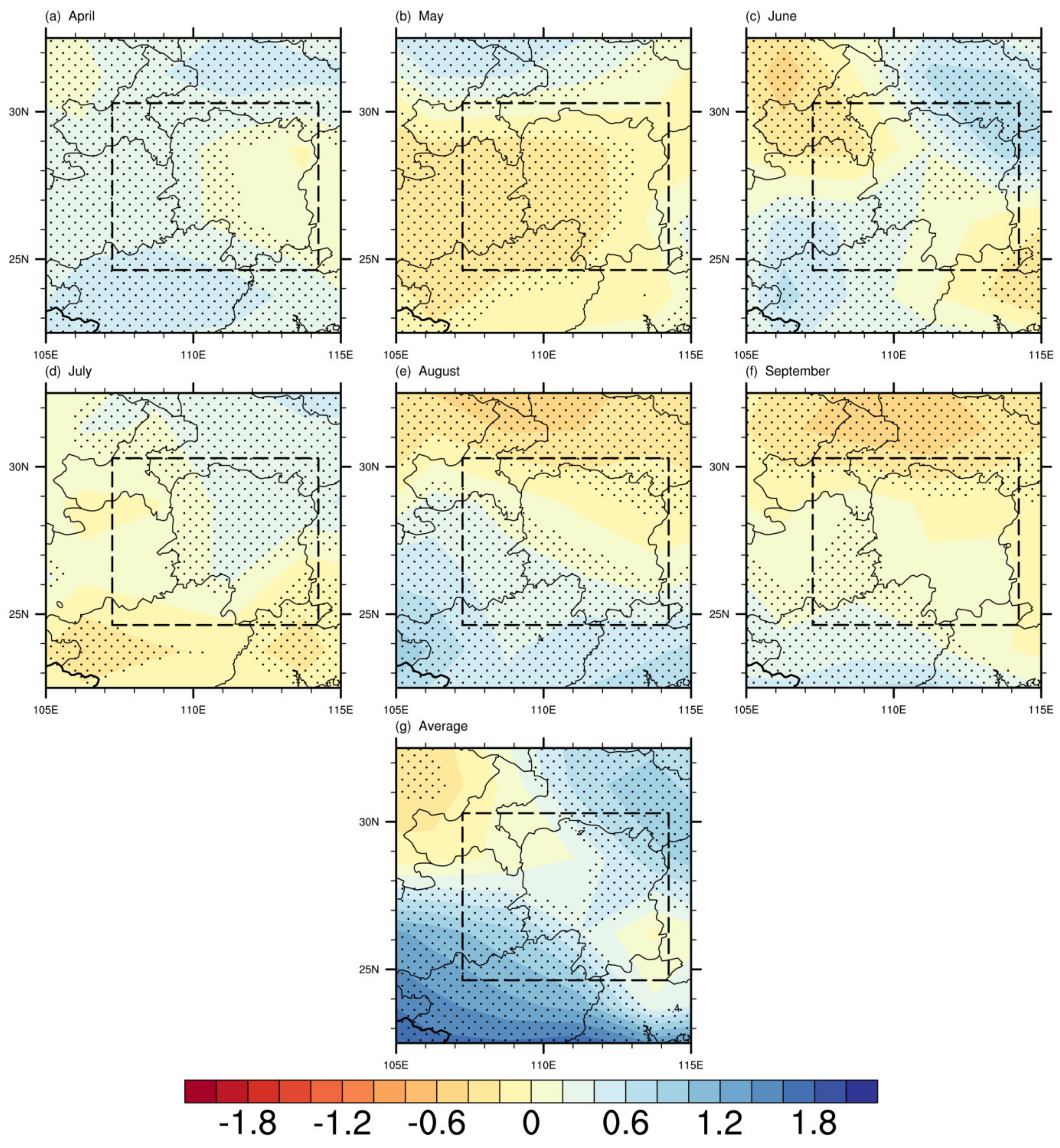
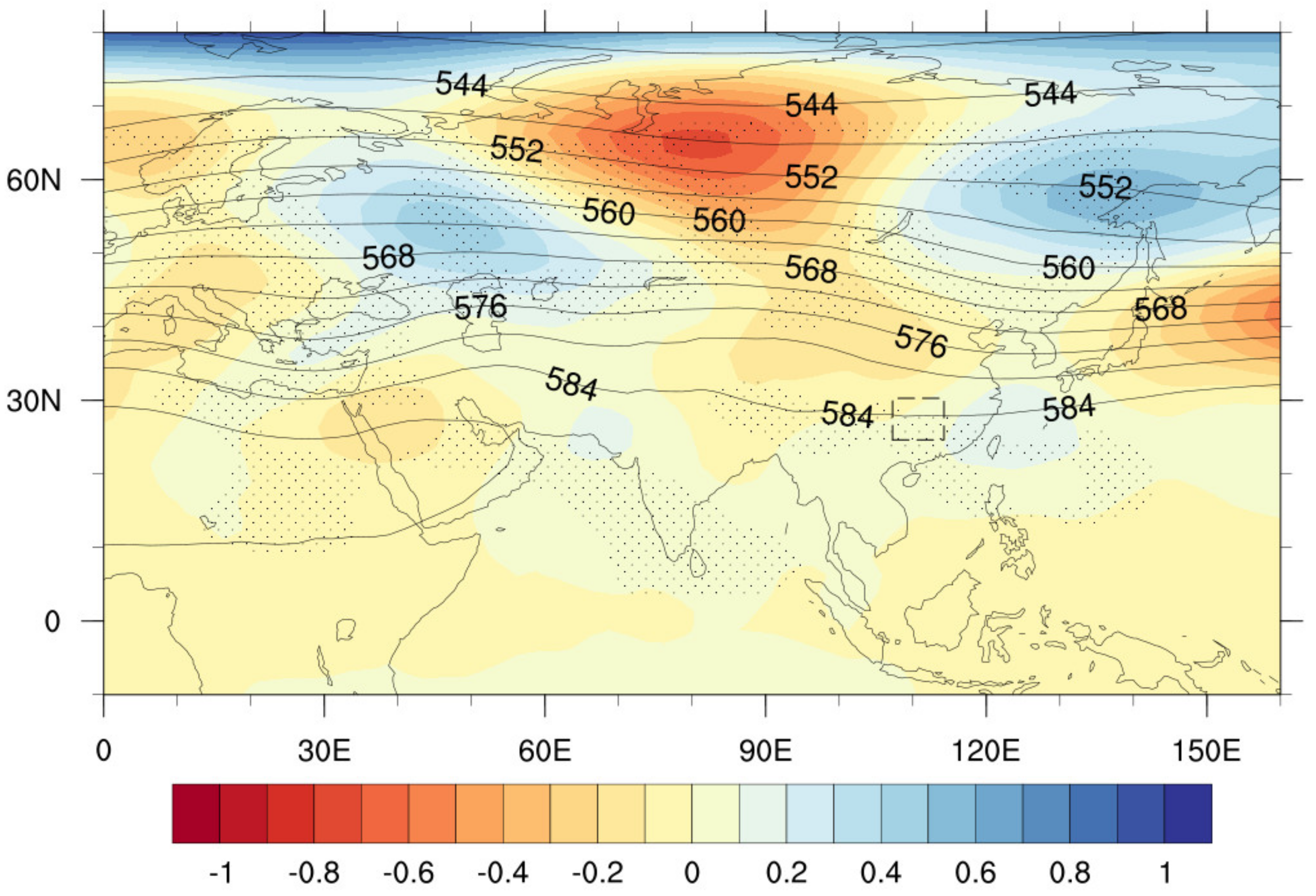

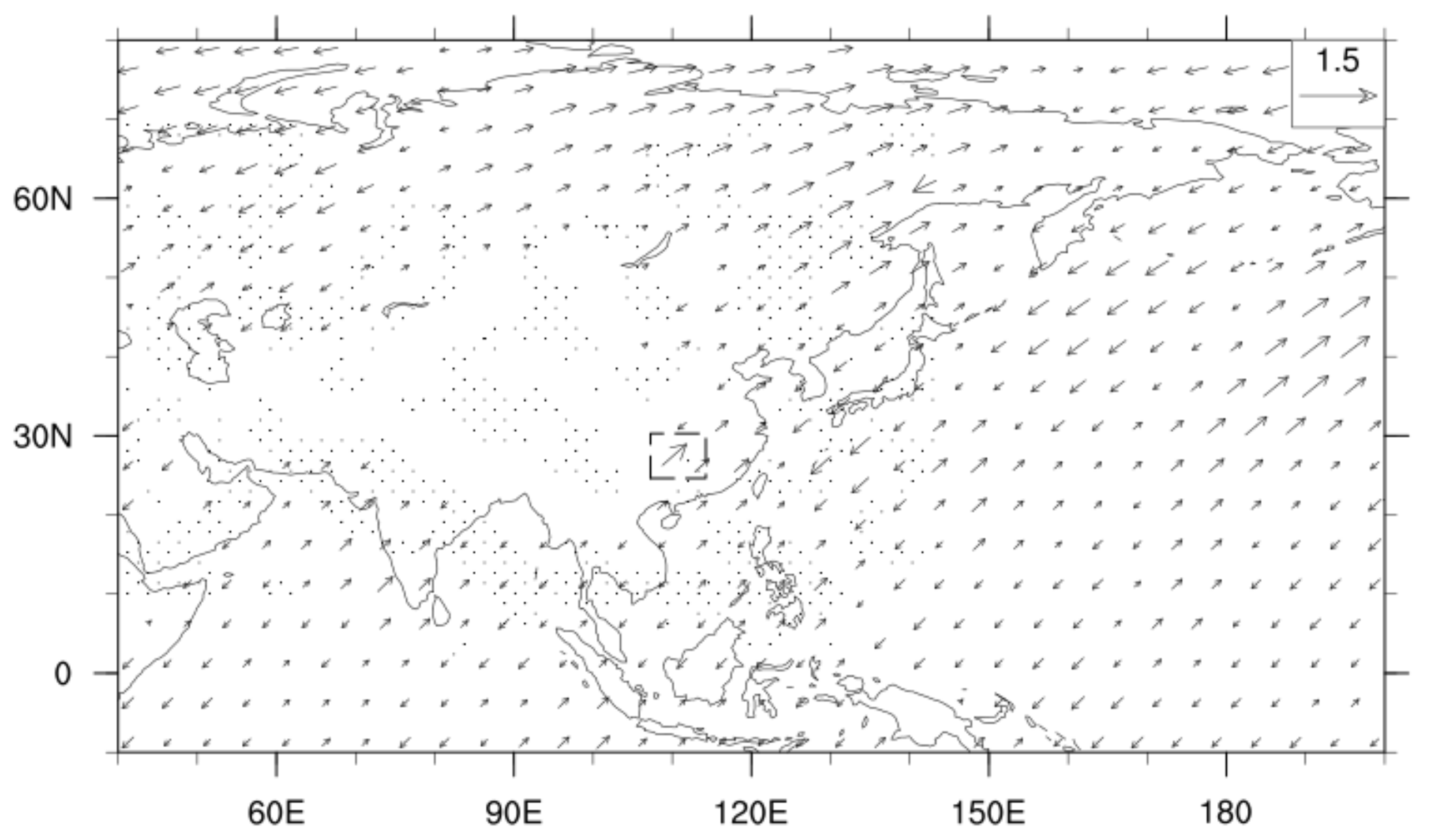
| Model Name | Modeling Center and Country | Resolution Grid × Grid |
|---|---|---|
| ACCESS1-0 | Commonwealth Scientific and Industrial Research Organisation (CSIRO) and Bureau of Meteorology (BOM), Australia | 192 ×145 |
| bcc-csm1-1 | Beijing Climate Center, China | 128 ×64 |
| CNRM-CM5 | Centre National de Recherches Meteorologiques, France | 256 × 128 |
| FGOALS-s2 | Institute of Atmospheric Physics, Chinese Academy of Sciences, China | 128 × 60 |
| GFDL-ESM2G | NOAA Geophysical Fluid Dynamics Laboratory, USA | 144 × 90 |
| GISS-E2-H | NASA Goddard Institute for Space Studies, USA | 144 × 90 |
| inmcm4 | Institute for Numerical Mathematics, Russia | 180 × 120 |
| IPSL-CM5A-LR | Institut Pierre Simon Laplace, France | 96 × 96 |
| IPSL-CM5A-MR | Institut Pierre Simon Laplace, France | 144 × 143 |
| MIROC5 | Marine-Earth Science and Technology, Japan | 256 × 128 |
| MIROC-ESM | Marine-Earth Science and Technology, Atmosphere and Ocean Research Institute (The University of Tokyo), and National Institute for Environmental Studies, Japan | 128 × 64 |
| MPI-ESM-LR | Max Planck Institute for Meteorology, Germany | 192 × 96 |
| MPI-ESM-MR | Max Planck Institute for Meteorology, Germany | 192 × 96 |
| MRI-CGCM3 | Meteorological Research Institute, Japan | 320 × 160 |
| NorESM1-M | Norwegian Climate Centre, Norway | 144 × 96 |
| Month | Flood Season | 4 | 5 | 6 | 7 | 8 | 9 |
|---|---|---|---|---|---|---|---|
| Precipitation | 990 | 156 | 203 | 238 | 159 | 137 | 97 |
| State | Normal | More | Prominently More | Abnormally More |
|---|---|---|---|---|
| Positive anomaly | △R% ≤ 25% | 25% < △R% < 50% | 50% ≤ △R% < 80% | 80% ≤ △R% |
| State | Normal | Less | Prominently less | Abnormally less |
| Negative anomaly | △R% ≥ −25% | −25% > △R% > −50% | −50% ≥ △R% > −80% | −80% ≥ △R% |
Publisher’s Note: MDPI stays neutral with regard to jurisdictional claims in published maps and institutional affiliations. |
© 2022 by the authors. Licensee MDPI, Basel, Switzerland. This article is an open access article distributed under the terms and conditions of the Creative Commons Attribution (CC BY) license (https://creativecommons.org/licenses/by/4.0/).
Share and Cite
Yin, Y.; Jiang, S.; Peng, J.; Zhu, H.; Ruan, N.; Wang, W. An Evaluation of Precipitation in Dongting Lake Basin on CMIP5 Models. Atmosphere 2022, 13, 1571. https://doi.org/10.3390/atmos13101571
Yin Y, Jiang S, Peng J, Zhu H, Ruan N, Wang W. An Evaluation of Precipitation in Dongting Lake Basin on CMIP5 Models. Atmosphere. 2022; 13(10):1571. https://doi.org/10.3390/atmos13101571
Chicago/Turabian StyleYin, Yiwen, Shuai Jiang, Jie Peng, Hao Zhu, Neng Ruan, and Wei Wang. 2022. "An Evaluation of Precipitation in Dongting Lake Basin on CMIP5 Models" Atmosphere 13, no. 10: 1571. https://doi.org/10.3390/atmos13101571
APA StyleYin, Y., Jiang, S., Peng, J., Zhu, H., Ruan, N., & Wang, W. (2022). An Evaluation of Precipitation in Dongting Lake Basin on CMIP5 Models. Atmosphere, 13(10), 1571. https://doi.org/10.3390/atmos13101571






